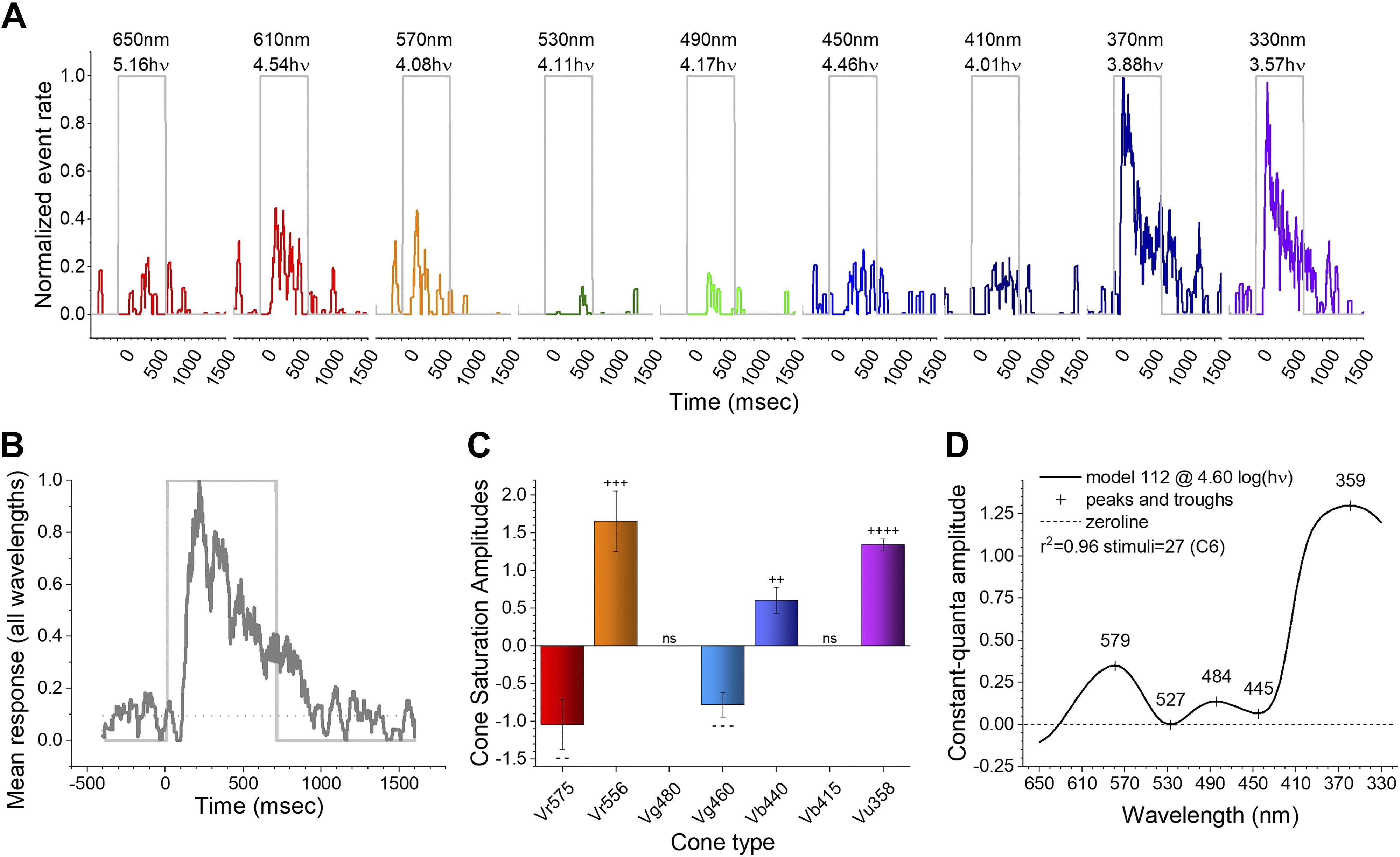Fig. 4 Fitting the sample C6 impulse data to a spectral model. A: impulse events (shown in Fig. 2) are detected, and the running averages of events in a 50-ms time bin are displayed as normalized event rates. Wavelengths are color coded and shown above each stimulus trace. The number below each wavelength is the irradiance in log(quanta·µm−2·s−1) (where hν = quanta). C6 stimulus protocol. B: the mean waveform for all 9 wavelengths shows increased activity throughout the 700-ms stimulus. C: the best-fitting model (112) uses 5 cone signals to represent the data set. + and − indicate significance of excitatory or inhibitory signals. respectively, with the number of symbols representing t test significance (GraphPad convention). D: event-rate amplitudes for constant quantal stimulation across wavelengths [log(quanta·µm−2·s−1) = 4.60] for the best-fitting model (112). No other model had a comparable residual variance (F test, P ≥ 0.95).
Image
Figure Caption
Acknowledgments
This image is the copyrighted work of the attributed author or publisher, and
ZFIN has permission only to display this image to its users.
Additional permissions should be obtained from the applicable author or publisher of the image.
Full text @ J. Neurophysiol.

